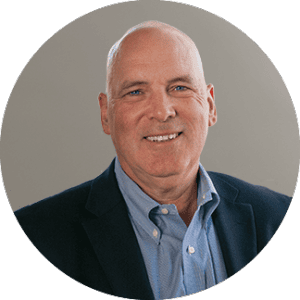

Judith Zielinski
General Manager, Europe
As the General Manager for Europe at Blue Ridge, Judith Zielinski oversees Blue Ridge’s operations across the region, driving the company’s success and expanding its footprint in the supply chain planning sector.
With extensive experience in customer success, strategic business development, and sales across multiple continents, Judith has a proven track record of delivering impactful results for customers in the Nordics, EMEA, and APAC regions. Her expertise spans complex sales, cross-functional team leadership, and building strong customer relationships, particularly in SaaS solutions for supply chain optimization.
Before joining Blue Ridge, Judith held various roles at RELEX Solutions, Blue Yonder, and Symphony RetailAI, where she was instrumental in driving sales and customer success across the Nordics and broader European markets. She holds a MA in Diplomacy and Politics from the University of Nottingham and a law degree in European Legal Systems from the University of East Anglia.
Judith is passionate about helping organizations achieve efficiency and profitability through innovative supply chain planning solutions, turning challenges into opportunities for growth and transformation.
Matt Bordes
Chief Revenue Officer
With 18 years in enterprise SaaS software and the last 12 at Plex and Rockwell Automation, Matt honed his expertise in driving sales success and building high-performing teams. His deep understanding of ERP, MES, QMS, and Supply Chain in manufacturing has enabled him to create significant value for mid-market and enterprise organizations.
Prior to joining Blue Ridge, Matt served as Vice President of the Americas for Rockwell’s enterprise software business. His journey started in sales, where he quickly developed a passion for building and leading sales teams. Over the years, he has managed regions across North America and Latin America, primarily focusing on the mid-market. He believes that sales success is a blend of both art and science where a disciplined, methodical approach is key to achieving sustained results.
At the core of his leadership style is a commitment to fostering a culture of collaboration, accountability, and teamwork.

Matt Worth
Chief Customer Success Officer
Matt is a supply chain subject matter expert with 25 years of experience in helping leading enterprises transform their supply chains with innovative SaaS solutions.
Prior to joining Blue Ridge, Matt held the COO position at Trax Technologies, a SaaS provider of Logistics Spend Management solutions. He also spent considerable time at E2open, leading Professional Services teams in enabling end-to-end supply chain collaboration and control tower solutions for major manufacturers. The first decade of his career was dedicated to management consulting with Accenture and PricewaterhouseCoopers.
Matt’s educational background includes a BA from Cornell University, MBA from Rice University, and a certification in Digital Supply Chain Transformation from MIT.

Kyle J. Pexton
Chief Executive Officer
Kyle Pexton is a seasoned executive with 25+ years of leadership experience in SaaS-based B2B software companies, specializing in driving innovation and growth in the technology and FinTech sectors. Most recently, Mr. Pexton served as President and CFO of NMI, a payments enablement platform, where he led the company through significant organic growth and strategic acquisitions. Prior to NMI, he held senior financial leadership roles at Accelerated Payment Technologies and Authorize.Net, contributing to their substantial success in the payments and technology industries.
Mr. Pexton has also served on the boards of several companies across the payments, e-commerce, capital markets, supply chain, and retail sectors, where he provided strategic guidance on technology, finance, and operations.
Kyle is a licensed Certified Public Accountant and holds a Master of Accountancy degree from Brigham Young University.

Anil Kona
Chief Technology Officer
Anil Kona is an accomplished technology leader with over 20 years of experience delivering innovative enterprise software solutions. As Chief Technology Officer at Blue Ridge, he currently leads software development to bring complex products to market.
Previously, Anil served 5 years as Vice President of Engineering at Coupa Software. In this capacity, he built and led high-performance application engineering teams that quadrupled company revenues to over $1 billion in 5 years through organic and inorganic growth. Prior to Coupa, Anil spent 11 years progressing through senior technical leadership roles at Xactly. During his tenure, he made significant contributions to scaling the engineering organization and driving business growth.
Anil holds a Master’s Degree in Engineering from the Birla Institute of Technology and Science in India as well as executive education certificates in areas like business strategy, finance, and leadership from UC Berkeley’s Haas School of Business.

Ken Carpenter
Chief Product & Strategy Officer
Ken brings an extensive history of solution innovation, business strategy and ecosystem development across industries and technology areas to his role as Chief Product & Strategy Officer. With his executive and corporate strategy experience, he has created and lead programs working across major strategic partnerships, large and small consultancies, channel partners, and technology alliances.
Ken’s history includes supply chain management solution companies like Blue Yonder (formerly known as JDA Software) developing modern partner programs, ParkourSC (formerly known as Cloudleaf) in IoT and digital twin solutions, and Cisco Systems leading business
operations in solutions for Sports, Entertainment, and Retail.
Ken graduated from Brigham Young University with a BS in Business Management with emphasis on Finance and an MBA with emphasis on Venture Capital, Entrepreneurship and Strategy. He also led the BYU Cougars Men’s Swim Team as Captain in his undergraduate
years.

Brad Kaluzna
Chief Revenue Officer
Brad is the Chief Revenue Officer for Blue Ridge responsible for driving sales growth, overseeing marketing strategy, and delighting customers. Brad has over 20 years of sales and leadership experience in the technology industry.
Prior to joining Blue Ridge, Brad was Chief Revenue Officer for SmartLinx and VP of Global Enterprise Sales for ADP. Brad spent 20+ years at ADP, where he held 10 different roles, which aligns perfectly with his loyalty and entrepreneurial spirit.
Brad holds a bachelor’s degree from Indiana University Bloomington.

Lia Kapanadze
Revenue Operations Leader
Lia brings several years of experience as a consultant and advisor for Private Equity firms, including TPG, to drive “extreme” top-line growth for middle-market B2B SaaS companies.
Most of her work has been in the “Commercial” operating functions, including Sales, Marketing, Revenue Operations, Channel, Product, and Pricing.
As the Head of Revenue Operations for Blue Ridge, Lia drives visibility, efficiency, and productivity across Commercial teams with the goal of growing the customer base and increasing the value customers derive from our SaaS software solutions.
Prior to working for PE firms, she began her career at a Supply Chain-focused Management Consulting firm headquartered in NYC.
Lia was born and raised in Tbilisi, the Republic of Georgia; she came to the United States in 2013 to study at University. She is fluent in Georgian, Italian, and English and certified in JavaScript, Python, and Ruby. Lia holds a bachelor’s degree in Economics from Mount Holyoke College.

Laura Hogans
Talent & HR Leader
Laura is a collaborative, influential leader with an exceptional record of accomplishing inclusive and consultative talent acquisition practices. With over 15 years of experience in talent acquisition and HR services, she currently serves as the Head of Talent and HR for Blue Ridge. Laura’s experience has allowed her to grow and sharpen her skills in Recruiting, Coaching, Leadership, Engagement, and Talent selection.
Laura received a BS in Business Administration from Delaware Valley University and is dedicated to organizational growth and company culture.

Dawn Russell
Chief Customer Officer
As Chief Customer Officer, Dawn is responsible for overseeing customer success in integration, product adoption, technology enhancements, and overall customer satisfaction. A results-oriented IT professional with 20 years of experience driving growth, deliverables, and productivity for diverse organizations.
Prior to joining Blue Ridge Dawn was VP of Development and Customer Success with Izenda, where she was responsible for product management, product development, onboarding, and support initiatives across the company to deliver outstanding customer value. Prior to that, Dawn applied her management skills at NCO, Stratose, QBE FIRST, and Trauner, Cohen & Thomas LLP.

Sam Sharff
Chief Financial Officer
Sam has held financial leadership roles with many high-growth SaaS companies, from sub-$10 million to $300 million+ ARR.
Prior to Blue Ridge, Sam was CFO at DadeSystems (acquired by Versapay, a Great Hill Partners company). Before that, Sam was VP Finance at Netsurion (Providence Strategic Growth), Director Finance at Model N (NYSE:MODN), and led FP&A at Greenway Health (Vista Equity Partners).
Sam began his career at PricewaterhouseCoopers (PwC). Sam holds an MBA from the University of Florida and a Bachelor’s from the University of Michigan.

Jim Byrnes
Executive Chairman
Jim Byrnes is the Executive Chairman of Blue Ridge, where he brings a proven track record in growing profitable application and consulting businesses.
Prior to joining Blue Ridge, Jim served as CEO of M4 Global Solutions, consisting of three independent operating companies: Changepoint, Uniface. and Lochbridge. Prior to M4, he spent more than 11 years at Infor, where he held multiple executive positions, including SVP of Process Manufacturing and Wholesale Distribution and EVP of Global Consulting Services.
He previously ran the US operations of Ability as President of the supply chain management solutions provider. Jim has also served as the Chief Operations Officer of Impact Innovations Group, a consulting services company focused on delivery chain management.
